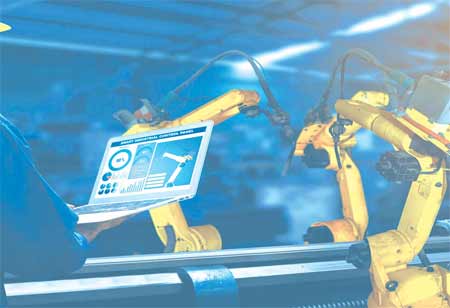Thank you for Subscribing to Healthcare Business Review Weekly Brief

Advancements in Orthodontic Technology: Revolutionizing Dental Care
Healthcare Business Review
The field of orthodontics is undergoing a technological revolution, with innovations ranging from digital imaging and 3D printing to robotics and artificial intelligence.
Orthodontics focuses on correcting misaligned teeth and jaws and has witnessed remarkable technological advancements over recent years. These innovations have not only enhanced treatment effectiveness but also improved patient experience. Technology has revolutionized orthodontic care, from diagnosis to treatment planning and execution. Traditional orthodontic diagnosis relied heavily on physical impressions, which could be uncomfortable for patients and sometimes inaccurate. Digital imaging and 3D scanning have transformed this process. It improves accuracy and enables better treatment planning.
High-resolution intraoral scanners now capture precise images of the teeth and gums, allowing orthodontists to create detailed 3D models of the patient's mouth. CAD/CAM technology combined with 3D printing has opened up new possibilities in orthodontic treatment. Orthodontists can digitally design custom appliances such as braces, aligners, and retainers and fabricate them using 3D printers. The level of customization ensures a better fit and more efficient treatment, leading to faster results and improved patient comfort. Traditional braces have evolved into smart braces with sensors and actuators that monitor tooth movement in real-time.
The braces can adjust forces automatically, optimizing treatment and reducing the number of visits required for adjustments. Clear aligner systems have integrated features like compliance indicators that track patient wear-time, ensuring better treatment adherence and outcomes. Robotics is increasingly incorporated into orthodontic procedures, particularly in complex cases requiring precise movements. Robotic systems assist orthodontists during surgeries, implant placements, and other intricate procedures, enhancing precision and reducing the risk of complications.
The robotic platforms streamline workflows, making treatment more efficient. AR and VR technologies are transforming patient education and treatment planning in orthodontics.
Patients can now visualize their treatment outcomes in real-time through AR simulations, helping them make informed decisions about their orthodontic care. VR technology is also utilized for immersive training experiences so that orthodontic students and professionals can now practice complex procedures in a virtual environment, thanks to the advancements in technology. The rise of teleorthodontics has revolutionized how orthodontic care is delivered, especially in remote or underserved areas. Patients can now consult with orthodontists remotely via video calls, reducing the need for frequent in-person visits. Remote monitoring devices, such as smartphone apps and wearable sensors, enable orthodontists to track patient progress remotely, ensuring timely interventions when necessary.
Advances in material science have led to the development of biocompatible orthodontic materials that are durable and safer for patients. Tooth-colored ceramic braces and clear aligners made from medical-grade plastics are increasingly popular among patients seeking more aesthetically pleasing treatment options. AI algorithms are being integrated into orthodontic software systems to assist orthodontists in treatment planning. These AI-powered tools analyze patient data, including 3D scans and facial photographs, to predict treatment outcomes and recommend personalized treatment plans. By harnessing the power of machine learning, orthodontists can achieve more predictable results and optimize treatment efficiency.
The advancements improve treatment outcomes, enhance patient experience, and expand access to orthodontic care. As technology continues to evolve, the future of orthodontics holds promise for even more groundbreaking developments, ultimately leading to healthier smiles and improved quality of life for patients worldwide.









